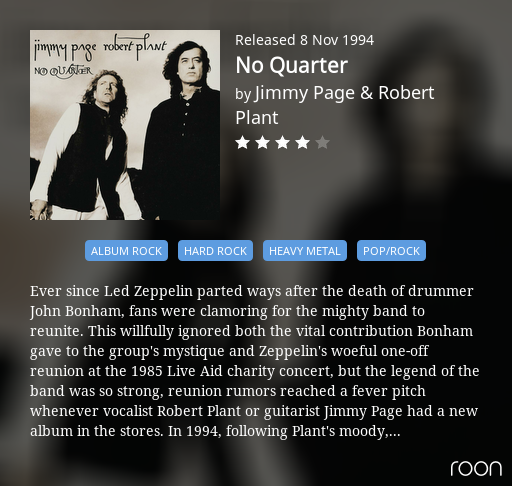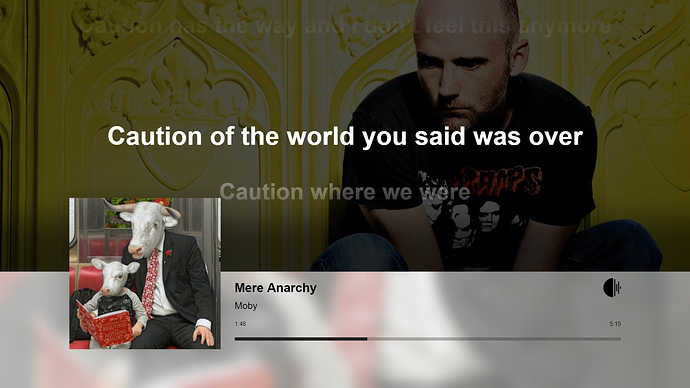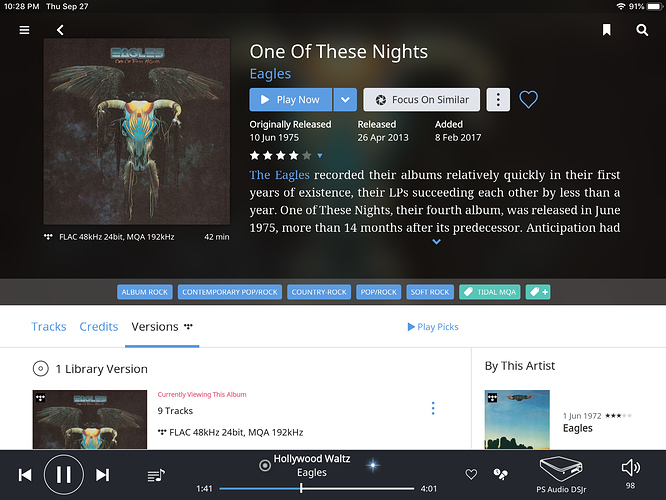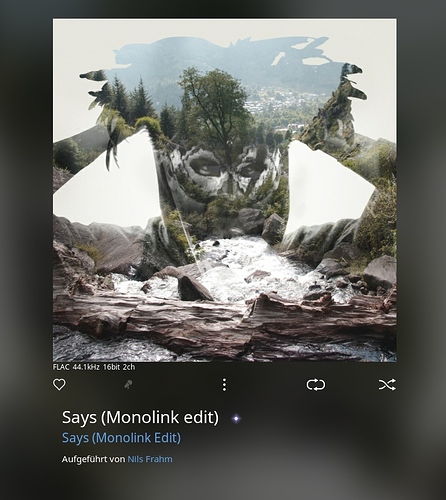

It’s called Combo 66 because that’s how old John Scofield is this year. Yet the American guitarist has also linked the number to the song Route 66 , the bossa-nova band Brasil 66 and mid-Sixties music in general. There’s even piano and organ to enhance the retro mood. Don’t expect a nostalgic wallow, though. Sco’s electric guitar is as fuzzy as ever and all the tunes are originals. This is modern music.
(Chris Pearson for The Times [09/28/2018])
Despite the duo formation, Danielsson and Fresu often manage to evoke a sweeping sound; full and resounding even in its most fleeting narrations. There is an overall laidback nature that saturates Summerwind but through the tranquility a subtle heat keeps things energized. The spartan album is a showcase for the first-class talents of Danielsson and Fresu.
(Karl Ackermann for allaboutjazz.com)
The 1961 Joan Baez recording of “The Lily of the West”. Roon of course doesn’t have the lyrics, despite
having been published well over 100 years ago.
But a lovely recording nonetheless.
The first ECM leader date for Shai Maestro (following his label debut with Theo Bleckmann on Elegy ) features the gifted pianist fronting his superlative trio with fellow Israeli Ofri Nehemya on drums and Peruvian bassist Jorge Roeder, and also playing alone. A solo interpretation of Matti Caspi’s “My Second Childhood” opens the curtain on a programme of characteristically thoughtful Maestro originals, each one with a story to tell. “Hearing the Shai Maestro Trio is like awakening to a new world”, All About Jazz has suggested. “Expressions of joy, introspective thoughts and heightened intensity all come to the fore.” Maestro’s differentiated touch is special; he can convey a range of fleeting emotions in a single phrase. A deconstruction of “These Foolish Things”, the album’s sole standard, serves as a prelude to “What Else Needs To Happen”, a sombre meditation on inner city violence and its aftermath. The Dream Thief was recorded at Lugano’s Auditorio Stelio Molo RSI in April 2018, and produced by Manfred Eicher, and issued on the eve of a European tour with concerts in Spain, Germany, Netherlands, Sweden, Belgium, Italy, France, and Switzerland.
A rootsy blues album with an acoustic feel.
Tony Joe White is getting back to his roots, fifty years on from when he cut his first recordings. The swamp-rock veteran’s latest LP, Bad Mouthin’ , takes its name from the first song he ever wrote, a grimy country blues that’s only just seeing the light of day after more than five decades in obscurity.
(…) Unearthing those early compositions inspired White to likewise revisit his musical roots, and while five of the 12 tracks on Bad Mouthin’ are originals, the others consist of covers from the heroes of his youth. Hooker’s “Boom Boom” is among them, as are songs made famous by Jimmy Reed, Lightnin’ Hopkins, and Charley Patton. There’s even a cover of Elvis Presley, who recorded his own version of White’s “Polk Salad Annie” in 1973. – Rolling Stone

Many have tried to combine jazz and classical music. Few have succeeded.
In “New Eyes on Martin Luther” the ensembles have focused on the similarities instead of the differences, and have scrupulously avoided attempts at parody or postmodern extravagance.
Everyone is just doing what they’re best at, and with the open tonality of the renaissance music, they have found the perfect meeting place and playground for it. Swedish soprano Jeanette Köhn together with a small ensemble (Johan Norberg guitar, Magnus Lindgren, flute and clarinet, Eva Kruse, bass) fronted by Nils Landgren, recorded their album “New Eyes On Baroque” with Swedish Radio Choir under the baton of Gustaf Sjökvist (2013) released on ACT: “… how well the timbres of soprano saxophone, trombone and guitar suit the original melodies. The effect in Handel’s ’Gia nel seno’ and Purcell’s ’When I Am Laid in Earth’ is gorgeous” (The Observer, GB). ”A strong direct quality about the music which is distinctly Nordic in character…a superb piece of music making on the part of all involved” (Euan Dixon, Jazzviews).

“ACT seems to be on a mission to introduce the world to Europe’s rising new jazz-classical pianists,” the UK’s leading jazz critic John Fordham of the Guardian has noted. And jazz for piano has indeed always been part of ACT’s DNA. The label’s roster includes pianists who have achieved international renown such as Joachim Kühn, Esbjörn Svensson and Michael Wollny; and more recently the Austrian David Helbock has started to be recognized as the major talent he clearly is. Siggi Loch started the dedicated album series “Piano Works” to present the finest in solo piano playing, and Rainer Böhm with his album “hýdōr” becomes the latest pianist to enter this pantheon.
Born in Ravensburg in Southern Germany in 1977 and now based in Cologne, Böhm is considered by critics to be one of the country’s outstanding jazz pianists, yet among the wider public he has not reached the level of recognition he deserves. He has made his mark through some excellent projects – with saxophonists Johannes Enders and Lutz Häfner, and trumpeter Axel Schlosser, for example. In 2016 with drummer Bastian Jütte’s quartet he won the award which is widely held to be the most important in German jazz, the New German Jazz Prize – and he won the Soloist Prize as well. He teaches at the conservatoires in Nuremberg and Mannheim, where he is one of their youngest professors.














